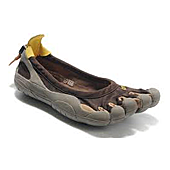The risk of injuries to distance runners is quite high, estimated to be between 30% and 75% per year, depending on how injuries are defined. Despite years of research and numerous improvements in running surfaces, shoes, and health care for runners, the injury rate has not significantly declined over the years. The causes of running injuries are multifactorial, and treatment and prevention with graduated training programs, shoe changes, and orthotics has not been able to achive substantial benefits, especially where rigorous scientific validation of the oucomes has been done.
Are you a heel striker, midfoot striker, or toe runner?
Recent research has focused on running style, specifically foot strike pattern as a possible factor in runners injury. There are generally three categories of foot strike pattern. There are runners who are rear foot strikers, where the heel contacts the ground first. There are runners whose forefoot or ball of the foot makes contact before the heel, and there are mid-foot strikers, where the heel and ball of the foot contract the ground simultaneously.
| Foot strike pattern appears to play a role in your risk of running injury. |
 |
Minimal footwear influences foot strike pattern
Recent trends in minimally protective running shoes may lead to changes in a runners foot strike pattern. Barefoot runners, and runners wearing minimal footwear are more likely to be midfoot or forefoot strikers. Recent science has suggested that the human body may be better adapted to forefoot strike running. However, these claims currently are not supported by science or research.
 |
Minimally protective footwear seems to lead to midfoot or forefoot strike running, but there is no scientific basis for the claims that the new shoes directly prevent injuries. |
Will minimally protective footwear eliminate your risk of injury?
The clear answer to this question is absolutely not. In a recent research study, injuries occurred both in runners wearing standard footwear and runners using minimal footwear. However, the study clearly shows that rear foot strikers have a higher injury rate than forefoot strikers. Rearfoot strikers in the study had 2.7 times more injuries, (5.8 versus 2.2 injuries per 10,000 miles run), and this difference was statistically very significant. Most of the increased injuries were repetitive stress injuries, not traumatic injuries.
| Minimal shoes appear to encourage forefoot strike running, and because of this, runner's injuries may be avoided. |
 |
Treatment of Ankle and Foot Fractures
There is no scientific proof that minimal footwear has a direct effect on injury rates in long-distance runners. However, runners who wear running flats or other minimal footwear are more likely to be forefoot strikers, at least partly because the lack of heel protection encourages a forefoot running pattern. As a result of adopting a forefoot strike running style, runners who wear minimal footwear may have a lower risk of injury.
Dr. DeGroot specializes in orthopedic foot and ankle surgery. He treats many Olympic, elite level and professional athletes and runners. Along with his colleagues at the Newton Wellesley Hospital, he participates in the medical care of the elite and amateur runners in the Boston Marathon. Click here to set up an appointment.